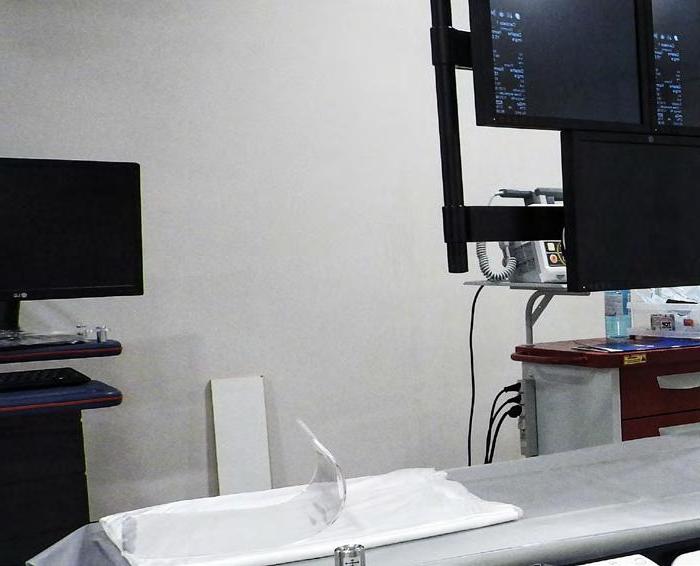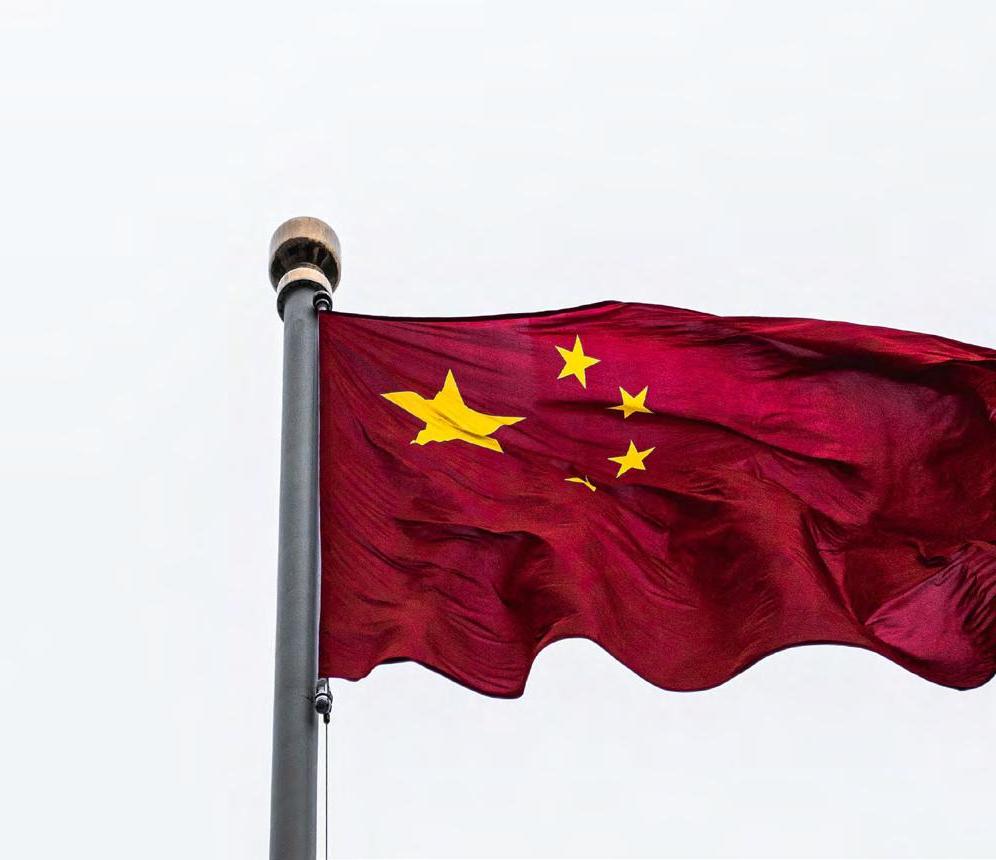
6 minute read
01 China’s health care sector and health care economy
China’s health care sector and health care economy 01
Market Overview
China’s enormous health care market continues to expand, driven by an aging population, changing consumer habits, increasing urbanization, and economic growth. Roughly 15 percent of China’s population is currently aged 60 or older, a number that is expected to reach 37 percent by 2050 13 . It is expected that one-quarter of the country’s population will be 65 or older by 2050, and that half will be 45 or older 14 . The health care system is not yet prepared for the additional burden this will bring, particularly regarding non-communicable diseases (NCDs) and chronic diseases such as cancer and cardiovascular disease. In 2014, about 87 percent of all premature deaths were caused by NCDs 15 . By 2016, the percentage had already increased to 89 percent 16 . According to a World Bank report from 2011, the number of NCD cases among Chinese people over 40 will double or even triple over the next two decades until 2030 17 . Naturally, COVID-19 has brought about additional challenges for the handling of pandemic response and infectious diseases. And indirectly, the pandemic also entailed negative consequences for the management of chronic disease, the monitoring and treatment of chronic disease patients 18 .
Health care expenditure data
Market Size: China is the second largest health care market in the world, with total health care spending of USD 558 billion in 2016 19 . Forecasts indicate China’s
13
14
15
16
17
18
Ulrike Reisach, Das Gesundheitswesen in China, Berlin 2017, pp. 8.
EY, The rise of private health insurance in China, 2016, p. 5, <https://www. ey.com/Publication/vwLUAssets/EY-the-rise-of-private-health-insurance-inchina/$FILE/EY-the-rise-of-private-health-insurance-in-china.pdf>.
World Health Organization, Noncommunicable Diseases(NCD) Country Profiles – China, 2014, <https://www.who.int/nmh/countries/2014/chn_en.pdf?ua=1>.
World Health Organization, Noncommunicable Diseases (NCD) Country Profiles – China ,2016, <https://www.who.int/nmh/countries/chn_en.pdf?ua=1>.
World Bank, Toward a Healthy and Harmonious Life in China: Stemming the Rising Tide of Non-Communicable Diseases, 2011, p. 2, <https://www.worldbank. org/content/dam/Worldbank/document/NCD_report_en.pdf>. World Health Organization, China shows COVID19 responses must be tailored to local context https://www.euro.who.int/en/health-topics/health-emergencies/ coronavirus-covid-19/news/news/2020/4/china-shows-covid-19-responsesmust-be-tailored-to-the-local-context (accessed 21.07.2021). health care market will be worth USD 2.4 trillion by 2030 20 , with double digit growth rates expected 21 .
Health Care Spending: In 2014, health care expenditure as a share of GDP was 5.6 percent 22 and by 2020, China’s healthcare spending is expected to account for 6.5 to 7 percent of its total GDP 23 while the economy still grew by 6.1 percent before the COVID-19 crisis 24 ., In 2017, Chinese domestic general government health expenditure per capita was equivalent to USD 440 25 compared to an average of over USD 5,200 in the world’s eighth largest health care markets. 26 Analysts estimate that health care expenditures in China could reach USD 1 trillion as early as 2020, as China converges with health care spending patterns in developed markets. 27
Health Care Spending Growth: Since 2003, health care expenditure has grown by 20 percent annually in China 28 . Roughly 36 percent of all health care spending is in the form of out-of-pocket expenses 29 . In the long term, China’s growing prosperity and aging population are expected to lead to a 10–15 percent increase in the rate of health care growth. 30 How COVID-19 will influence health care spending remains to be seen. The SARS epidemic in 2003 had triggered meaningful government reforms and investments.
20
21
22
23
24
25
26
27
28
29
China Daily, according to the Chinese National Health and Family Planning Commission, “China’s health service industry to reach 16 trillion yuan by 2030,” Aug 15, 2017 The Economist: Navigating through China's evolving healthcare market: Healthcare 2020 https://www.eiu.com/public/topical_report. aspx?campaignid=Chinahealthcare2020 (accessed 21.07.2020). Ulrike Reisach, Das Gesundheitswesen in China, Berlin 2017, pp. 21.
Healthcare reforms underscore market growth in The China Briefing < https:// www.china-briefing.com/news/healthcare-reforms-underscore-marketgrowth-china/> (accessed 21.07.2020). World Bank, China GDP growth <https://data.worldbank.org/indicator/NY.GDP. MKTP.KD.ZG?locations=CN> (accessed 21.07.2020).
WHO, Domestic health expenditure, https://data.worldbank.org/indicator/ SH.XPD.GHED.GD.ZS?locations=CN&view=chart, (accessed 16.07.2020)
WHO, http://kraneshares.com/resources/presentation/2018_06_30_kure_ presentation.pdf, 2015. (accessed on 30.06.2018)
Global X, China Sector Analysis: Health Care, https://www.globalxetfs.com/ china-sector-analysis-health-care/, Apr 25, 2019 Council on Foreign Relations, China’s Healthcare Sector and U.S - China Health Cooperation, <https://www.cfr.org/report/chinas-healthcare-sector-and-uschina-health-cooperation> (accessed on 17.07.2020).
World Bank, Out-of-pocket expenditure (% of current health expenditure) – China, <https://data.worldbank.org/indicator/SH.XPD.OOPC.CH.ZS?locations=CN> (accessed on 17.07.2020).
The Chinese health care system
China’s central government is responsible for national health legislation, health policy, and health administration. Every citizen is entitled to receive basic health care services 31 . Local governments (provinces, prefectures, cities, counties, or towns) are responsible for providing them. Health authorities include the National Health Commission (NHC) and local Health Commissions, which are responsible for organizing and delivering health care, and for supervising providers. Over the past two decades, China has undergone reforms aimed at improving access to health care through infrastructure investment, insurance reform, and expansion of the private hospitals and health facilities market 32 .
Health insurance
More than 95 percent of the Chinese population benefits from basic health care coverage 33 . But financial coverage is still quite low and patients in 2017 still paid 36.1 percent of health care costs themselves on average 34 . Costs of assistive treatments in particular (such as prosthetics) are not reimbursed by national health insurance and have to be covered by out-of-pocket payments in most cases. Health insurance is also provided by employers. Many Chinese companies offer group health insurance to attract and retain their employees. The Chinese government has continuously increased financial coverage in recent years, but it still faces ever-growing demand for better health care from the rising middle class.
China’s public social health-care system has three levels of funding
So far, the public health-care system has provided for differentiated health care coverage depending on the place of residence (rural/urban) and employment status. In concrete terms, this included: . Urban Employee Basic Medical Insurance (UEBMI) funded by both the employer and the employee (the latter with yearly contributions equivalent to
EUR 90–220))
Urban Resident Basic Medical Insurance (URBMI) funded by both the state and the resident (the latter with yearly contributions equivalent to EUR 19–90)
The new Rural Cooperative Medical Scheme (NRCMS) funded by the state and the rural resident (the latter with yearly contributions equivalent to EUR 19–50 but depending on relative levels of wealth and prosperity in the different regions) 35 .
In addition, there is a supplemental level—with critical illness insurance (CII) to reduce citizens’ health care expenditure. 36 Starting in 2018, however, the Chinese government announced that a unified health insurance scheme would be implemented for all urban and rural residents, with equal payments by 2019-2020 37 . The Chinese government is offering incentives to attract private foreign companies to enter the health insurance market.
32
33
34
The Commonwealth Fund, International Health Care Systems Profiles – China, <https://www.commonwealthfund.org/international-health-policy-center/ countries/china> (accessed on 21.07.2020).
Ibid.
Ulrike Reisach, Das Gesundheitswesen in China, Berlin 2017, p. 20.
World Bank, Out of pocket expenditure, <https://databank.worldbank.org/ reports.aspx?source=2&series=SH.XPD.OOPC.CH.ZS&country=CHN> (accessed 17.7.2020).
35
36
37
Ulrike Reisach, Das Gesundheitswesen in China, Berlin 2017, pp. 20-21.
Pengqiang Fang et al., The effect of critical illness insurance in China in Medicine Journal Baltimore <https://www.ncbi.nlm.nih.gov/pmc/ articles/PMC6076100/>Published online 2018 Jul 6. doi: 10.1097/ MD.0000000000011362
“China to complete standardizing urban, rural medical insurance by 2019”, in China Daily, 25.07.2018, <http://www.chinadaily.com.cn/a/201807/25/ WS5b58716ba31031a351e90204.html> (accessed on 17.07.2020).










